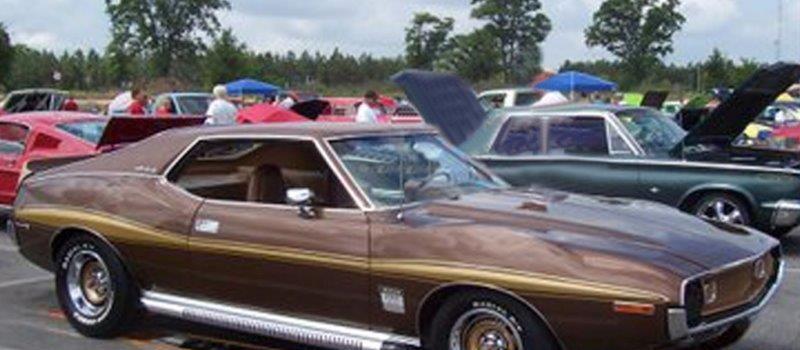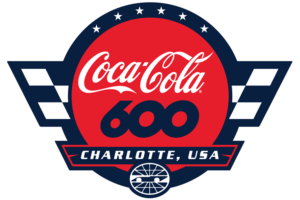Although it only operated for 35 years, the forward-thinking American Motors Corp. had a huge impact on the domestic auto industry that is still felt today. Some of the innovative vehicles AMC brought to market will be part of an exhibit at Charlotte Motor Speedway’s April 7-10 Charlotte AutoFair.
AMC was born in 1954, the result of a merger between the Hudson Motor Car Co. and Nash-Kelvinator Corp. Hudson and Nash were small, spunky automakers that could no longer survive in the market against the deep pockets of the Big Three—Ford Motor Co., General Motors, and Chrysler Corp. Bringing together Hudson and Nash was the planned first step toward building a multi-brand GM-style competitor, but potential partners Studebaker and Packard went their own ways and were soon defunct.
During its three-and-a-half decades in business, AMC continued Nash and Hudson’s “innovate or die” philosophies, often beating the Big Three to market with products that predicted market needs. Before its remains were absorbed into Chrysler Corp. in 1990, AMC broke new ground with the:
- First American Corvette competitor — The 1968 AMX was a shortened, two-seat version of AMC’s new Javelin “pony car.” AMX buyers could order a 315hp, 390ci V-8, which put the lightweight AMC in the performance ballpark of Chevrolet’s legendary sports car. Car and Driver magazine testers drove a 390-powered AMX to 60 miles per hour in 6.6 seconds, just 0.1 second slower than the Corvette. The AMX also cost $1,400 less than the ’Vette.
- First law-enforcement pony cars — A dozen years before the California Highway Patrol unveiled its famous fleet of Ford Mustang pursuit vehicles, the Alabama Department of Public Safety ordered 132 AMC Javelins (with the 401ci V-8 option) for pursuit work. The small, fast, and inexpensive ($3,047 in 1971 and $3,242 in 1972) Javelins were in service through 1979.
- First domestic compact station wagon — In 1971, while the Big Three were struggling to hit the sweet spot with their new-fangled compact models such as the Ford Pinto and Chevrolet Vega, AMC introduced its Hornet-based station wagon, the Sportabout. With room for five and a moderate amount of luggage, the Sportabout convinced many Americans to downsize their family cars.
- First fashion tie-ins — Designer Pierre Cardin worked his French magic on the 1972–73 AMC Javelin SST. For only $85, the average American could add a touch of European flair to his or her top-line AMC performance car. There were 4,152 fashion-forward, Cardin Javelin buyers during the two years. Also for 1972–73, AMC worked with Italian designer Aldo Gucci on a package for its Hornet Sportabout station wagon. History tells us it was a popular upgrade, with 4,835 going to new homes. For 1973, the AMC Gremlin could be ordered with a special Levi’s package. That’s right, your bucket seats could be covered in blue denim with orange stitching and the famous Levi’s copper buttons. Today, we call this kind of inter-company involvement “synergy,” but it was just another Tuesday for AMC’s brainstormers.
- First all-wheel-drive crossover — In 2022, every automaker on the planet offers at least a half-dozen models in the lucrative “crossover” category. Loosely defined, a crossover is a car-based people-mover with an SUV-like body usually equipped with all-wheel drive and an increased ground clearance. Popular models include the Nissan Murano, Subaru Outback, and Ford Bronco Sport. AMC invented the crossover in 1980 when it installed a full-time four-wheel-drive system on its compact Concord sedans, coupes, and wagons to create the all-weather, all-road Eagle car line. The company was already familiar with four-wheel drive, having bought Kaiser Jeep in 1970.
An eight-car American Motors Corp. exhibit will celebrate many of these innovations during the April 7-10 Charlotte AutoFair at Charlotte Motor Speedway. The Showcase Pavilion will also feature Rick Hendrick’s $5 million Ferrari LaFerrari, the one-off 1966 Cannara sports car, the “Best of the Best” of the recent car show circuit, and a four-car Ford GT40 display highlighted by the car from the 2019 film Ford v Ferrari.
MORE INFO:
The Charlotte AutoFair features more than 50 car club displays and more than 10,000 vendor spaces offering an array of automotive parts and memorabilia. More than 1,500 collectible vehicles of all makes and models will be available for sale in the car corral that rings the 1.5-mile superspeedway throughout the four-day show. Hours for the April 7-10 Charlotte AutoFair are 8 a.m. to 6 p.m., Thursday through Saturday and 8 a.m. to 3 p.m. on Sunday.
TICKETS:
Single-day tickets are $10 on Thursday and $15 on Friday and Saturday for adults. A four-day weekend pass is available for just $40. Admission is FREE for children 12 and under with an adult. To buy tickets, AutoFair attendees can shop online at www.charlottemotorspeedway.com, purchase at the gate, or call 800-455-FANS (3267).
FOLLOW US:
Keep track of Charlotte AutoFair attractions and events by following on Twitter and Instagram or become a Facebook fan. Keep up with all the latest news and information with the Charlotte Motor Speedway mobile app.



